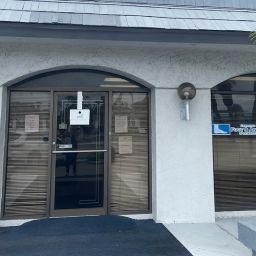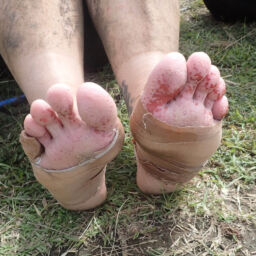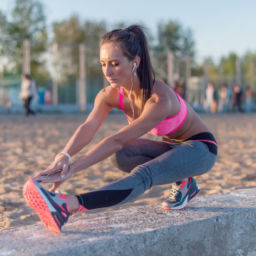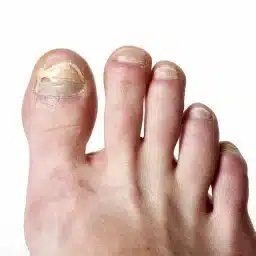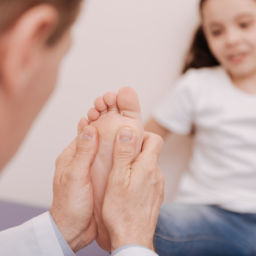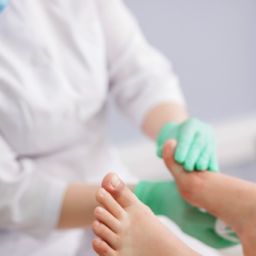
When it comes to understanding foot growth, many people wonder when their feet will finally reach their adult size. For most individuals, foot growth typically halts in the teenage years, but there are several factors that can influence this process, from genetics to body weight. In this article, we’ll look at what age feet generally stop growing, what can impact their growth, and how to maintain foot health for life.
When Do Feet Stop Growing?
For most people, feet stop growing for boys and girls at different ages. Girls’ feet typically stop growing around ages 13-14, while boys may continue to see growth until around age 16-18. This variation in age occurs because boys generally experience growth spurts later than girls, leading to longer periods of foot growth. However, every individual is unique, and some people may see slight changes in foot size even after these ages due to factors such as weight gain or changes in foot structure over time.
The Science Behind Foot Growth: Growth Plates and Long Bones
Feet grow due to growth plates, the areas of developing cartilage near the ends of long bones. In children and adolescents, growth plates are active and continuously produce new bone, allowing the feet to lengthen. Over time, the growth plates harden and close, which signals the end of foot growth. This typically happens in the teenage years but can vary based on individual development.
Growth spurts, particularly during puberty, also contribute to foot size. During these periods, feet may grow quickly and require new shoe sizes. It’s a good idea to monitor your child’s foot growth during these times and ensure they have shoes that fit properly, as tight or ill-fitting shoes can impact foot health.
What Can Cause Feet to Grow Larger Later in Life?
While feet generally stop growing in the teenage years, certain factors can lead to changes in foot size even after this period:
- Increased Body Weight: Weight gain can lead to changes in foot size, as the added pressure on your feet may cause them to widen or flatten. This change may result in needing a larger shoe size to accommodate the new foot shape.
- Loosened Ligaments: As people age, the ligaments in their feet can gradually loosen, which may cause the foot to become slightly longer and wider. This is a natural process, but it can result in needing to buy shoes in larger sizes.
- Pregnancy: Pregnancy can also impact foot size, as hormonal changes loosen the ligaments and increase body weight. Many women find that their shoe size increases by half a size or more during pregnancy, and this change can sometimes be permanent.
- Foot Structure Changes Due to Health Conditions: Conditions such as arthritis or flat feet can alter the structure of the feet, potentially leading to changes in shoe size over time. Maintaining foot health through supportive footwear and regular check-ups can help reduce the impact of these conditions on foot size.
Why It’s Important to Buy Shoes That Fit Properly
Buying shoes that fit properly is crucial for maintaining foot health at any age. Wearing shoes that are too small or too large can lead to foot pain, blisters, calluses, and even long-term issues such as bunions or hammertoes. As your feet may change slightly over time, it’s a good idea to have your foot size measured periodically, especially when buying new shoes.
When trying on shoes, be sure to leave a bit of room—about a thumb’s width—between your longest toe and the end of the shoe. This allows for natural foot movement when you walk or run. Shoes that fit properly should provide ample support and comfort to accommodate your unique foot shape and any changes that may have occurred since your last fitting.
The Impact of Foot Growth on Shoe Size
If you’re purchasing shoes for a teenager, it’s important to remember that their shoe size may still be changing. Growth spurts can cause rapid changes in foot size, and it’s not uncommon for teens to need new shoes frequently. Ensuring they have properly fitting shoes during this time will help protect their foot health and allow them to move comfortably.
For adults, changes in shoe size can occur gradually. If you find that your shoes no longer fit as comfortably as they once did, it may be time for a re-measurement. Factors such as weight gain, ligament changes, and the natural effects of aging can all influence foot size. By regularly checking your shoe size, you can ensure your footwear continues to provide the support and comfort needed for daily activities.
Foot Health Tips for Growing Feet
Here are some tips for maintaining foot health during periods of growth and beyond:
- Choose Supportive Shoes: Shoes that offer proper arch support and cushioning can protect the feet during growth spurts and help prevent issues like flat feet.
- Monitor Foot Changes: During times of growth, especially in teenage years, regularly check foot size and shoe fit. This is particularly important if your child is active in sports that involve running, as ill-fitting shoes can increase the risk of injury.
- Maintain a Healthy Weight: Increased body weight can add stress to the feet, potentially impacting foot structure and health. A balanced diet and regular exercise can help keep weight in a healthy range, reducing pressure on the feet.
- Strengthen Foot Muscles: Exercises that strengthen foot and ankle muscles can improve foot stability and reduce injury risks. Activities like toe stretches, heel raises, and balance exercises are good options.
- Stay Active: Regular physical activity, such as walking and running, helps maintain foot and overall body health. Just make sure to wear appropriate footwear to protect your feet during these activities.
Do Feet Grow Again Later in Life?
Once the growth plates in the feet close, foot size generally remains the same. However, due to natural changes in the ligaments and tissues, many people find that their feet become slightly longer and wider with age. This change is normal and can be managed by adjusting shoe size as needed. While your feet may not grow in the same way they did during adolescence, maintaining good foot health practices can help prevent discomfort and ensure that your feet support you comfortably throughout your life.
Conclusion: When to Consult a Podiatrist
While feet typically stop growing in the teenage years, various factors can cause changes in foot size and structure over time. If you’re experiencing discomfort, foot pain, or difficulty finding shoes that fit well, it may be time to consult a podiatrist. At Certified Foot and Ankle Specialists, we offer comprehensive foot care to help you maintain healthy, comfortable feet at any age. We hope this answers a common question ‘What age do feet stop growing?’ for kids and adults.
Contact us today to schedule an appointment and let our experienced team help you find the best solutions for your foot health needs. Your foot health matters! If you’re in Boca Raton or Palm Harbor, connect with our experienced podiatrists by clicking the link below. To call our Boca Foot and Ankle clinic dial 561-995-0229 and for the Palm Harbor foot and ankle clinic dial 727-785-5611.
